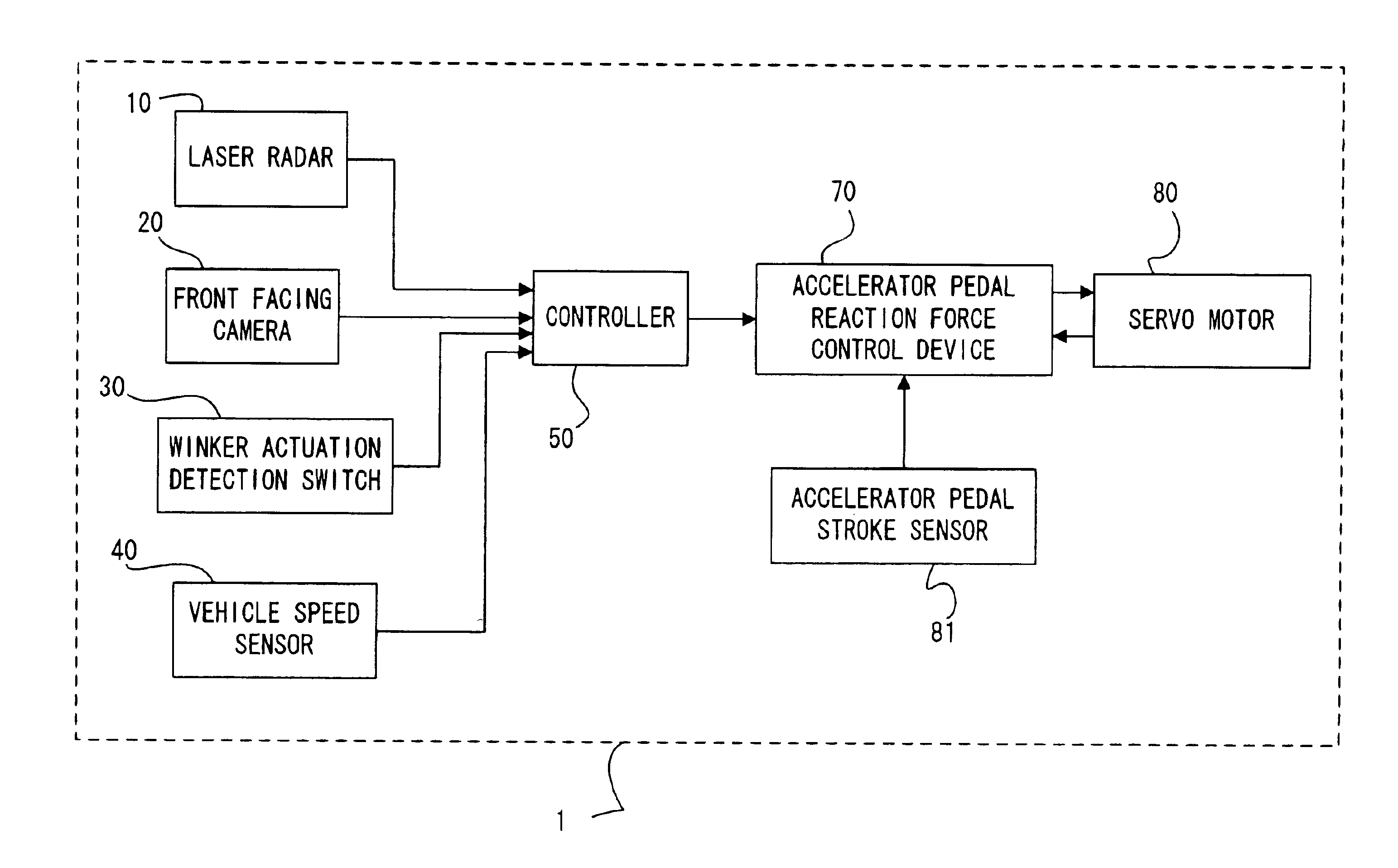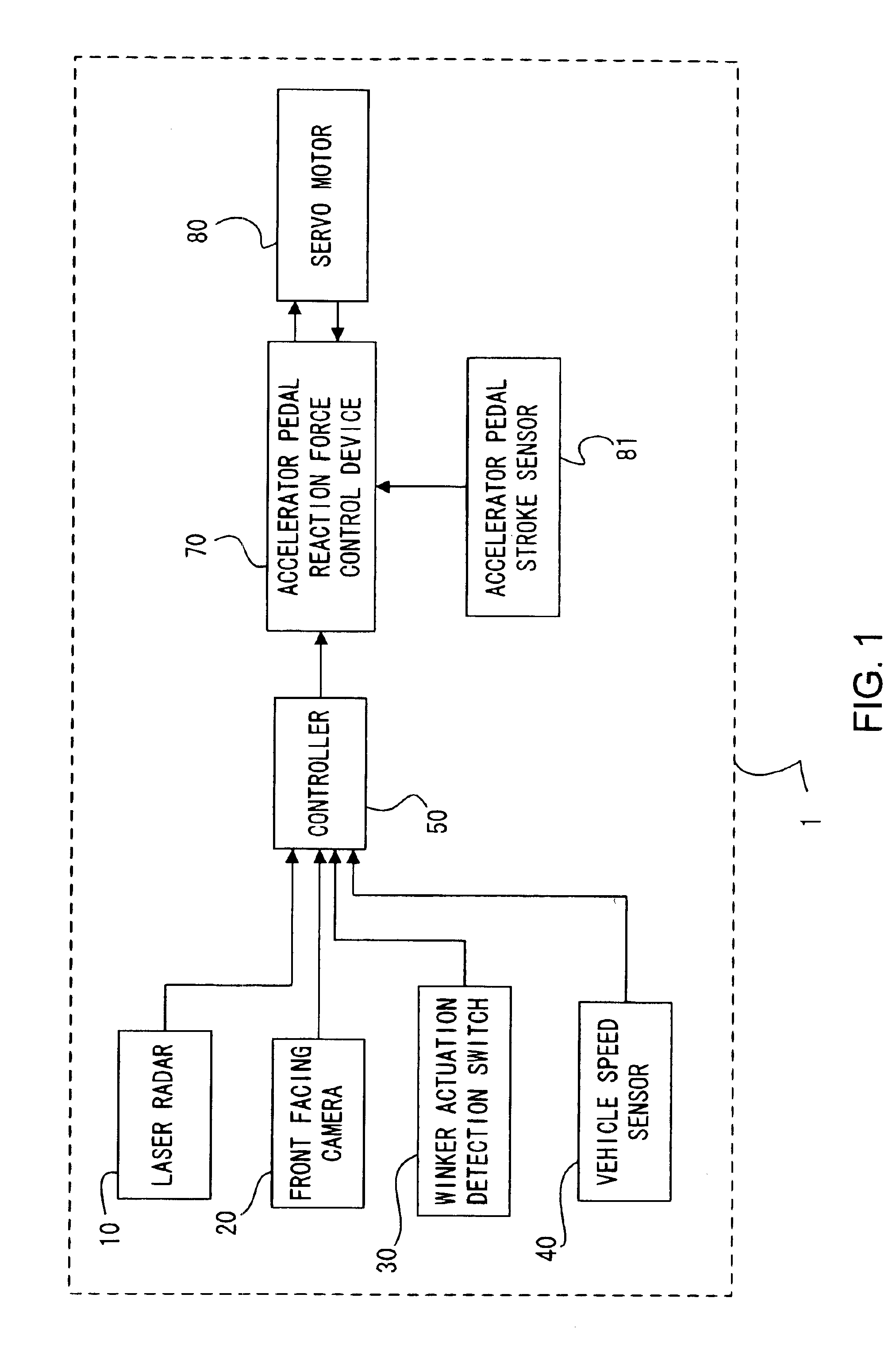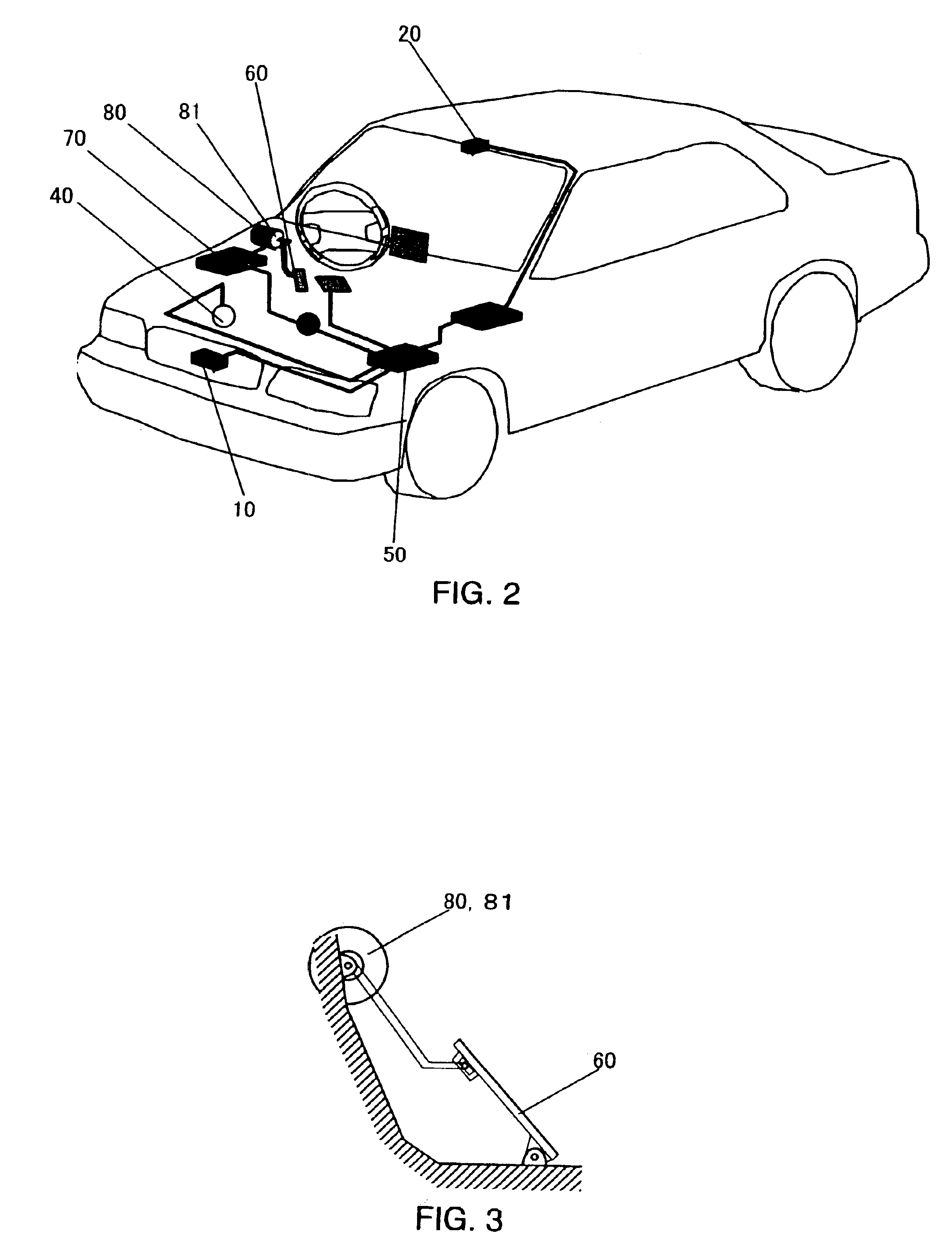Driving assist system for vehicle
a technology for driving assistance and vehicles, applied in the direction of controlling members, external condition input parameters, driver input parameters, etc., can solve the problem of great reaction force for stepping down upon the accelerator pedal
- Summary
- Abstract
- Description
- Claims
- Application Information
AI Technical Summary
Benefits of technology
Problems solved by technology
Method used
Image
Examples
first embodiment
[0027]FIG. 1 is a block diagram showing the structure of a driving assist system 1 for a vehicle according to the first preferred embodiment of the present invention, while FIG. 2 is a structural diagram of a vehicle to which this driving assist system 1 is fitted.
[0028]First, the structure of this vehicle driving assist system 1 will be explained.
[0029]A laser radar 10 is mounted to a front grille of the vehicle. Such a laser radar 10 is of a type which can scan horizontally and laterally about 6 degrees to each side of an axis parallel to the vehicle longitudinal centerline, propagates infrared pulses forward, and receives the radiation reflected by an obstacle, such as a rear bumper of a vehicle in front of the subject vehicle. This laser radar 10 provides the vehicle separation or distance, and the relative velocity or speed between the subject vehicle and the preceding vehicle. Such a laser radar 10 outputs the vehicle distance and the relative speed between the subject vehicle...
second embodiment
[0084]In the following, the driving assistance system for a vehicle according to the second preferred embodiment of the present invention will be explained. The physical structure of the vehicle driving assist system according to this second preferred embodiment is the same as that of the first preferred embodiment shown in FIGS. 1 and 2, and accordingly its description will be curtailed. Herein, the explanation will principally focus upon the points in which this second preferred embodiment differs from the first preferred embodiment.
[0085]FIG. 10 is a figure showing a characteristic of the reaction force increase amount ΔF with respect to the risk potential RP (RP-ΔF characteristic), in this second preferred embodiment of the present invention. In FIG. 10, the RP-ΔF characteristic when no intention on the part of the operator to change the vehicle lane is detected is shown by the broken line, while the RP-ΔF characteristic when an intention on the part of the operator to change th...
third embodiment
[0109]In the following, the driving assist system for a vehicle according to the third preferred embodiment of the present invention will be explained.
[0110]FIG. 13 is a figure showing the interior structure of a controller which is incorporated in this vehicle driving assist system 2 according to the third preferred embodiment of the present invention, and structures in its neighborhood. In FIG. 13, elements which correspond to elements of the first preferred embodiment shown in FIGS. 1 through 4 and described above are denoted by the same reference numerals, and their explanation will herein be curtailed. Here, the explanation will focus upon the point of difference between this third preferred embodiment and the first preferred embodiment.
[0111]As shown in FIG. 13, this vehicle driving assist system 2 according to the third preferred embodiment of the present invention comprises a risk potential modification section 56 which changes or modifies the risk potential RP according to ...
PUM
 Login to View More
Login to View More Abstract
Description
Claims
Application Information
 Login to View More
Login to View More - R&D
- Intellectual Property
- Life Sciences
- Materials
- Tech Scout
- Unparalleled Data Quality
- Higher Quality Content
- 60% Fewer Hallucinations
Browse by: Latest US Patents, China's latest patents, Technical Efficacy Thesaurus, Application Domain, Technology Topic, Popular Technical Reports.
© 2025 PatSnap. All rights reserved.Legal|Privacy policy|Modern Slavery Act Transparency Statement|Sitemap|About US| Contact US: help@patsnap.com



